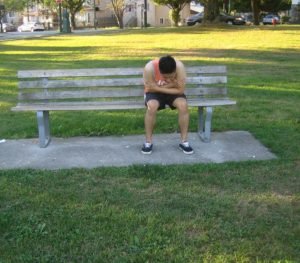Always bear in mind that children are at risk for head injury while playing sports, riding a bicycle as well as during recreational and vehicular accidents. In most cases, these injuries can be considered serious which results to permanent brain damage and death in severe cases.
A child who sustained a head injury might not develop symptoms that indicate a serious head injury until hours later. It is vital to seek immediate medical care for a head injury in order to rule out serious issues. Remember that emergency care should be sought if the individual loses consciousness, has difficulty breathing or bleeding.
External injury symptoms
An external head injury will not affect the internal brain or skull. The scalp is usually involved and damaged. The symptoms of external head injury are quite evident. A child who has struck his/her head might have bruising at the area of injury or bleeding if the skin has been broken. Remember that bleeding might be substantial since the scalp contains several blood vessels and can bleed profusely. In some cases, a contusion can form or there is swelling beneath the skin.
A child who sustained a minor external head injury might not end up with symptoms beyond pain, bruising or swelling. It is vital to monitor the child closely for 24 hours for additional symptoms. Once the symptoms progress, this can indicate a severe head injury such as a concussion or internal head injury.

Internal injury symptoms
The brain is cushioned by the fluid within the skull. On the other hand, a hard blow to the skull can damage the brain tissue and blood vessels. Various symptoms can manifest if the child suffers from an internal head injury.
The bleeding within the brain is serious and occurs once the blood vessels within the head become damaged during injury. A child can also have bleeding or drainage of clear fluid from the nose, ears or mouth right after injury. In some cases, there is difficulty with balance and speech, falling easily and inability to bear weight. This simply indicates that brain injury occurred. The pupils tend to vary in size and the child might have difficulty in focusing visually or blurry vision.
The child can also become unconscious even if he/she has been alert and awake immediately after the injury. The indications of a head injury can develop in a slow manner, occasionally days after injury. Close monitoring of the child is required while medical care must be sought once any symptoms develop.
Concussion
Always bear in mind that concussion is a form of closed head injury that often causes classic symptoms. This injury involves bruising in the brain which occurs once the brain bounced within the skull during the injury.
A child with a concussion might have immediate symptoms as well as those that develop in a slow rate. The symptoms include visual disturbances, dizziness, headache, nausea and vomiting as well as fatigue. In some cases, concussion can also cause anxiety, memory issues and difficulty with concentration that can manifest days after the injury. Take note that the symptoms of concussion in a child require immediate attention.
